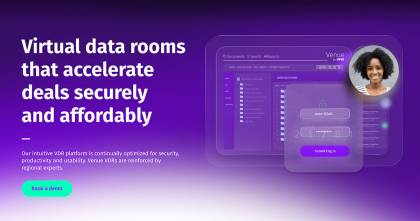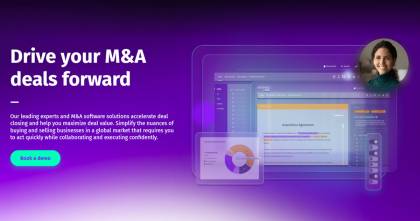When it comes to generative language models and AI, most of the talk centers around tools like ChatGPT. It's only a matter of time before higher-level applications of AI tools are upon us, such as using AI in deal sourcing. AI tools can help teams identify deal targets and stay on top of trends, providing them with the all-important first mover advantage when it comes to deals. Read on to discover the top ways teams will soon be using AI deal sourcing to streamline the M&A process.
Using AI in the Deal Sourcing Process
As mentioned, teams can miss out on important developments happening in real time. Even if they are well-intentioned and diligent, there is simply too much information flying around to keep up with — that's where AI can play an important role.
There is one important caveat to note first: Before teams can use artificial intelligence in dealmaking, they must train the AI to identify the right kind of information. The first step is defining the goal or what kind of deal is under consideration. When the AI is trained on the criteria that match the goal, it can then pick the right target out of a list of data. Without the initial training, AI results can be hit or miss.
Keeping this in mind, an AI tool can assist with various deal making stages, helping the team move quickly and stay on track with acquisitions.
Determine Targets
It's much easier and faster for an AI to go through diverse data sources, such as industry reports, financial reports, databases and spreadsheets, and even news stories or social media posts than it is for a team to perform this research manually. The AI can cull the relevant resources, using criteria that were selected by the team.
Screening
After preliminary targets are identified, the AI can screen applicants to focus on the best fit with the criteria. For example, the AI can rank preliminary targets based on their growth potential or their financial value, allowing the team to focus on the highest-value targets first.
Predictive Analytics
With so many potential targets for M&A deals, how can a team decide which one to go after first?
Predictive analytics help unpack this question by using historical data to anticipate future outcomes in key performance areas, such as revenue or return on investment. Applying predictive analytics to the target is a form of scenario forecasting. This can help the team “play through” the potential challenges and rewards of going after one target versus another, accelerating decision-making.
An AI can take publicly available pieces of information from reports, such as a business's number of employees, and use this to formulate predictive metrics that are not publicly available, such as revenue projections. Since the result is based in predictive technologies, there is a greater level of accuracy and trust over other forecasting methods.
Outreach
Natural language processing capabilities allow the AI to review corporate voice, tone and other elements and generate emails that sound like they were written by your employees. This brings the potential for significant time savings for busy teams.
Monitoring
When a target is identified and both parties move toward a deal, AI can play a role in the monitoring stage.
While the deal moves forward, there are always going to be changes to keep aware of. Similar to the way that a Google Alert can return new search results for a specified term, the AI can monitor the target for changes to the product lineup, management structure or other relevant news that could impact the deal.
AI & ChatGPT During the Deal
Now that you understand the early stage dealmaking AI and ChatGPT uses, how about during the deal? The following are areas where these tools provide valuable support throughout the deal.
Due Diligence
Due diligence is essential to the success of any deal. In this stage, each party verifies that the other was truthful with the information provided. Traditionally, deal due diligence was an all-hands-on-deck time when documents, financial statements and legal agreements were reviewed by experts.
Thanks to AI in private equity, many due diligence tasks can now be automated. Imagine how much faster a deal would proceed if financial statements and contracts were vetted by an AI, with any errors flagged for follow-up by a team member.
Deal Negotiation
In negotiation, each side wants to obtain the most favorable outcome possible. AI can bring predictive analytics to bear on the negotiation process by suggesting scenarios and alternatives. Parties may be able to strike a deal with more favorable terms than they would otherwise have been able to secure.
Virtual Assistants
Virtual assistant driven by tools such as ChatGPT can support the team in investor communication throughout the deal. For example, these tools can provide basic answers to investor questions, in much the same way that chatbot technologies support customers.
It's still the early days of using AI in deals. Companies that switch to generative language models and AI within their dealmaking process now will be in the early wave of adopters. Given the rapid evolution of AI tools like ChatGPT, their widespread adoption within the M&A process seems certain.


